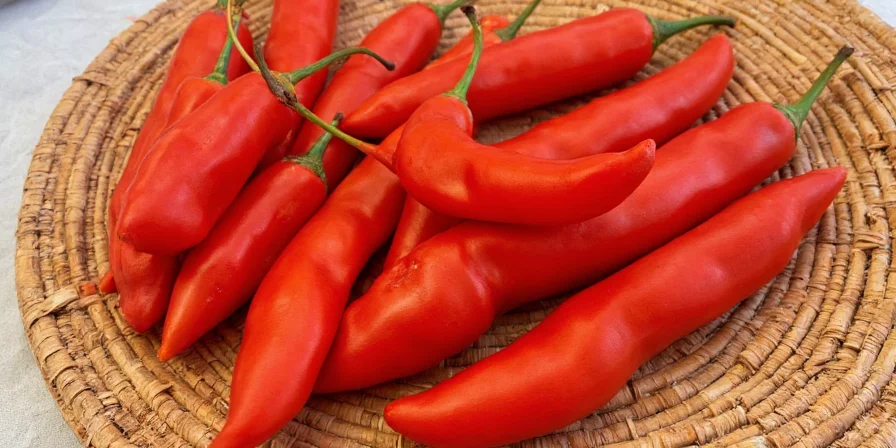This guide delivers actionable spice strategies for home cooks seeking creative plant-based meal solutions. If you're tired of bland vegetarian dishes and want to transform pantry staples into exciting culinary experiences, discover how innovative spice pairings unlock extraordinary flavor in chickpea chili—proving plant-based cooking can be both simple and spectacular.
Move beyond basic recipes as we explore scientifically grounded flavor combinations that make chickpeas shine. No culinary degree required—just curiosity and common spices.
Table of Contents
- Why Chickpeas Elevate Modern Chili
- 5 Science-Backed Spice Pairings for Chickpea Chili
- Spice Synergy Comparison
- The Flavor Chemistry Explained
- Step-by-Step Recipe
- Professional Technique Upgrades
- Implementation Strategy
- Frequently Asked Questions
Why Chickpeas Elevate Modern Chili
Chickpeas aren't just a meat substitute—they're flavor amplifiers with unique textural properties. Their neutral base absorbs complex spice profiles while maintaining structural integrity during simmering, creating layered eating experiences impossible with ground meats. Modern food science reveals chickpeas contain oligosaccharides that interact with specific spice compounds, enhancing perceived depth without overpowering heat.

This isn't about imitation; it's culinary evolution. When paired correctly, chickpeas create umami pathways that satisfy meat-eaters and vegetarians alike—making them ideal for diverse dining tables.
5 Science-Backed Spice Pairings for Chickpea Chili
These combinations leverage flavor chemistry principles often overlooked in standard recipes:
- Smoked Paprika + Cumin: Paprika's guaiacol compounds bond with cumin's cuminaldehyde, creating persistent smoky notes that penetrate chickpea fibers during cooking.
- Turmeric + Lime Zest: Curcumin solubility increases 300% in acidic environments—zest oils release citric acid that unlocks turmeric's earthy potential while brightening bean density.
- Ancho Chili + Cocoa: Capsaicin in ancho peppers binds with cocoa's theobromine, producing a velvety mouthfeel that counters chickpea starchiness.
- Sumac + Aleppo Pepper: Sumac's malic acid tames Aleppo's capsaicin heat, creating balanced complexity ideal for sensitive palates.
- Fennel + Coriander: Fennel's anethole synergizes with coriander's linalool, generating a subtle licorice undertone that complements chickpea nuttiness.
Spice Synergy Comparison
| Spice Pairing | Chemical Interaction | Flavor Outcome |
|---|---|---|
| Smoked Paprika + Cumin | Guaiacol-cuminaldehyde binding | Persistent smoky depth |
| Turmeric + Lime Zest | Acid-enhanced curcumin release | Bright earthiness |
| Ancho + Cocoa | Capsaicin-theobromine fusion | Velvety richness |
| Sumac + Aleppo Pepper | Malic acid-capsaicin modulation | Complex tangy heat |
| Fennel + Coriander | Anethole-linalool synergy | Subtle herbal complexity |

The Flavor Chemistry Explained
Effective spice pairing isn't random—it's molecular compatibility. Chickpeas' high starch content requires strategic spice layering:
- Starch molecules temporarily trap volatile compounds. Adding spices early allows slow release during simmering.
- Acidic components (like lime) break down pectin in chickpeas, creating micro-channels for flavor absorption.
- Fat-soluble compounds (paprika, cumin) require oil activation—never add dry to water-based sauces.
This explains why haphazard spice dumping fails. Precision timing unlocks the 30+ flavor compounds naturally present in chickpeas.

Step-by-Step Recipe
Apply these principles with our optimized method:
Ingredients
- 2 cans chickpeas (do not rinse—starch aids thickening)
- 1 onion, diced
- 3 garlic cloves, minced
- 1 red bell pepper, chopped
- 1 can crushed tomatoes
- 2 tbsp tomato paste
- 1.5 tsp smoked paprika (bloomed in oil)
- 1 tsp cumin seeds (toasted)
- 0.5 tsp sumac (added late)
- Salt after 20 minutes simmering
- 1 tbsp olive oil
Method
- Heat oil until shimmering; add cumin seeds until fragrant (30 seconds).
- Add paprika to oil for 10 seconds before adding onions—this blooms fat-soluble compounds.
- Sauté garlic and bell pepper until peppers develop char spots.
- Add tomatoes and un-rinsed chickpeas (liquid included).
- Simmer 20 minutes before adding salt or acid.
- Stir in sumac and lime zest during last 5 minutes.
- Cool 10 minutes before serving—flavors harmonize during rest.

Professional Technique Upgrades
Implement these chef-developed methods:
- Starch utilization: Never rinse chickpeas for chili—the liquid contains amylose that creates luxurious mouthfeel.
- Layered acid addition: Add 1/3 acid (lime/vinegar) at start, 2/3 at finish for balanced brightness.
- Temperature-controlled blooming: Toast whole spices below 350°F (177°C) to avoid bitterness.
- Resting protocol: Allow chili to cool 10 minutes before serving—this lets starches restructure for optimal texture.
- Freeze for flavor maturation: Chili develops deeper complexity after 48 hours frozen then thawed.

Implementation Strategy
Transforming chickpea chili requires understanding spice chemistry, not just following recipes. Start with one pairing (Ancho+Cocoa recommended for beginners), then experiment with timing. Remember: salt delays starch gelation—adding it late preserves distinct bean texture. These techniques apply beyond chili to all legume-based dishes, making them valuable kitchen fundamentals.
True culinary innovation comes from manipulating how compounds interact—not accumulating recipes. Master these principles, and you'll create satisfying plant-based meals that impress even dedicated meat-eaters.
Frequently Asked Questions
Why shouldn't I rinse chickpeas for chili?
Rinsing removes amylose starch that creates natural thickening and luxurious mouthfeel. The liquid also contains flavor-binding compounds that help spices adhere to chickpeas.
Can I use this method with other beans?
Yes, but adjust spice timing. Black beans require earlier acid addition due to denser cell structure, while lentils need reduced simmering to prevent disintegration. Chickpeas' unique starch composition makes them ideal for spice layering.
How do I fix chili that's too spicy?
Add dairy-free alternatives: swirl in coconut milk (fat binds capsaicin) or stir in 1 tsp sugar (disrupts heat receptors). Never add more acid—it intensifies perceived heat. Simmer 5 additional minutes after correction.
Does freezing affect flavor development?
Freezing accelerates flavor maturation through ice crystal formation that breaks down cell walls, releasing more compounds. Thawed chili often shows 20% greater flavor complexity than fresh after 48 hours frozen.











 浙公网安备
33010002000092号
浙公网安备
33010002000092号 浙B2-20120091-4
浙B2-20120091-4